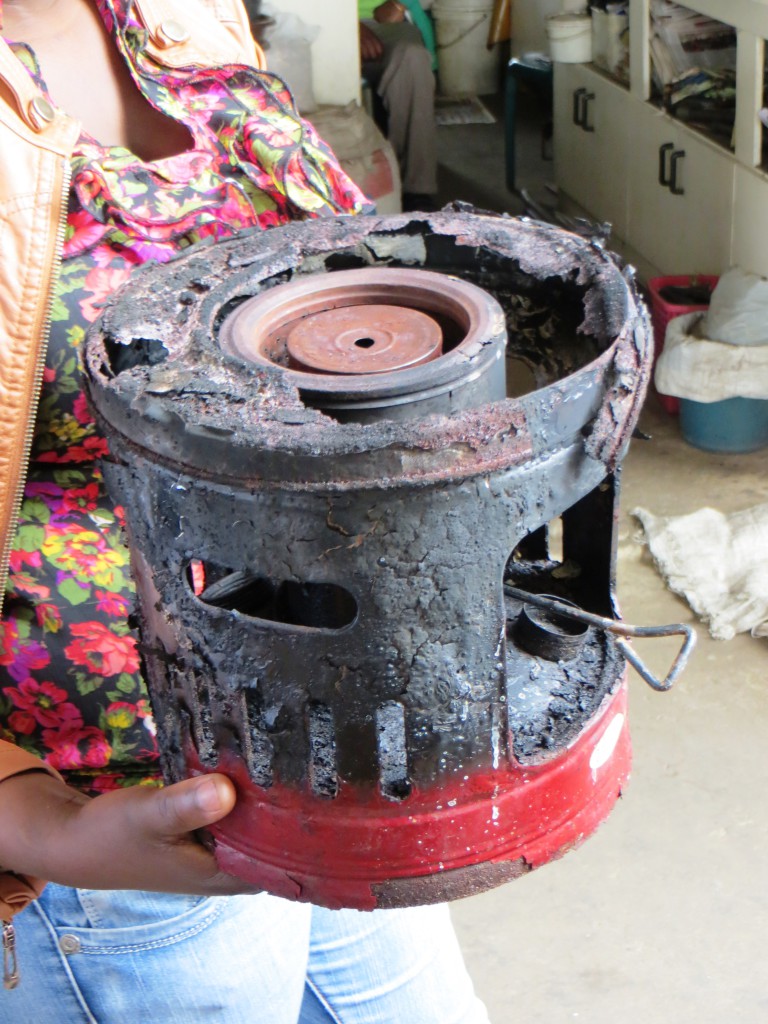Laura Alfers and Tasmi Quazi
In isiZulu “phephanathi” means “be safe with us.” The Phephanathi Project aims to make the informal trading area of Warwick Junction more secure and healthy for traders, customers and people passing through, and the officials who manage it. The project is a partnership between Asiye eTafuleni, Women in Informal Employment: Globalizing and Organizing (WIEGO), and various trader organizations within Warwick Junction.
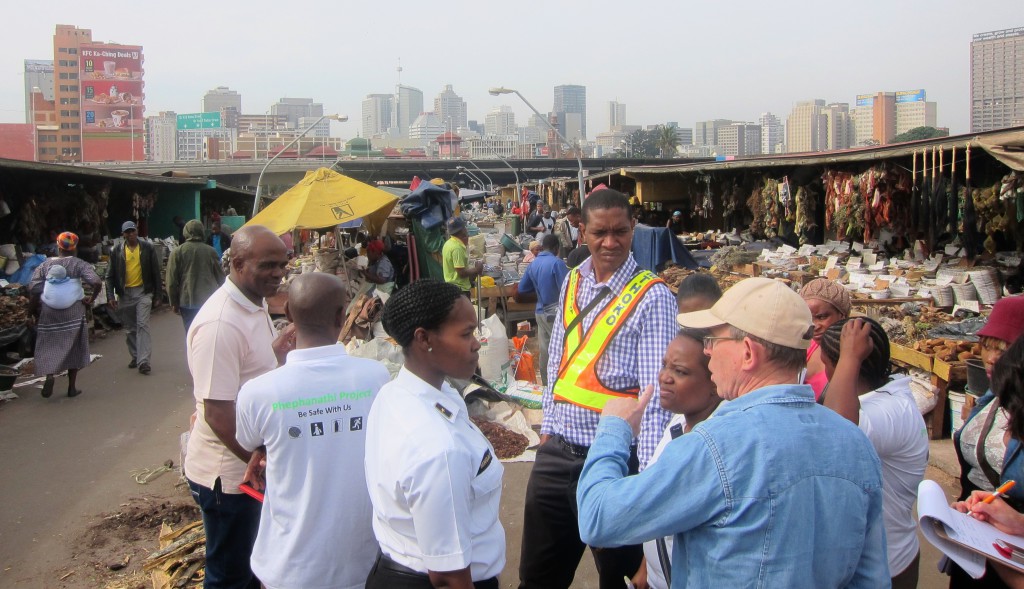
Despite the important role that traders play in the urban economy, they have little protection against the health and safety risks they face in their workplace. Labour regulations do not protect informal workers who work in public spaces and urban health and safety regulations are often more focused on protecting the public than they are on protecting workers. The Phephanathi Project is an innovative attempt to cross institutional boundaries and to think about new ways in which workplace health and safety protections can be extended to informal workers.
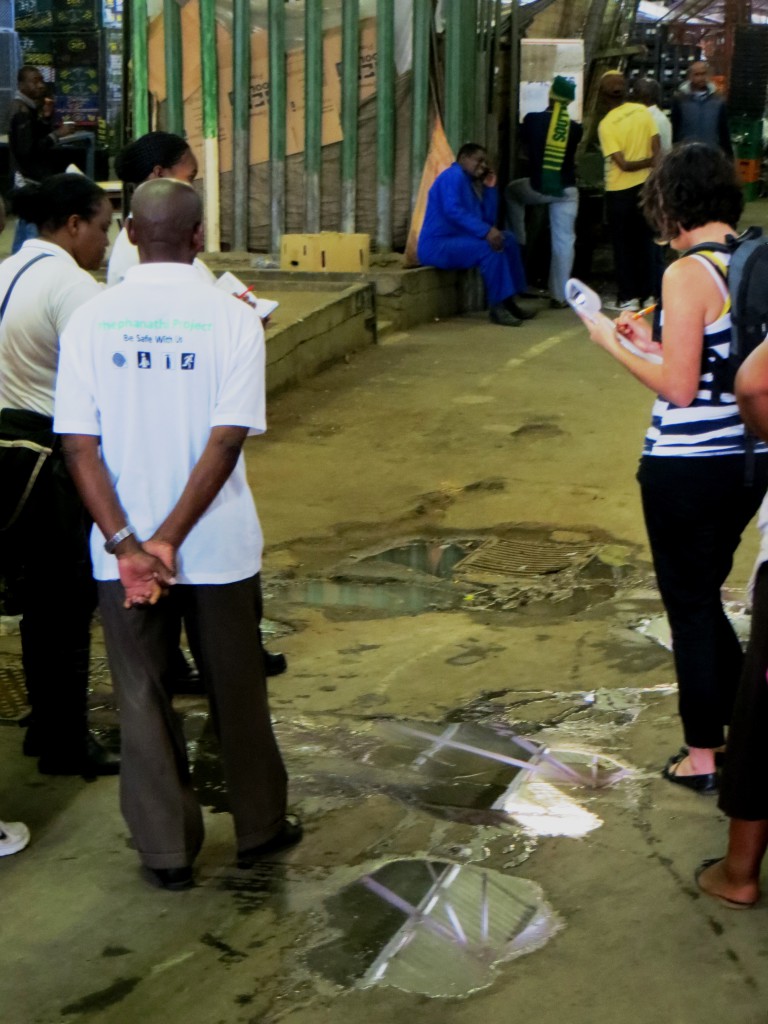
One of our main concerns is fire safety, as many traders sell cooked food, or use flame in their market stalls. Our first activity was to conduct a participatory mapping exercise of fire hazards in Warwick’s markets. Representatives from five markets together with staff from the eThekwini Metro Fire Department and the KZN Provincial Disaster Management Department spent a tough three hours walking through the markets and pointing out existing problems, such as gas canisters being stored inappropriately and blocked fire exits.
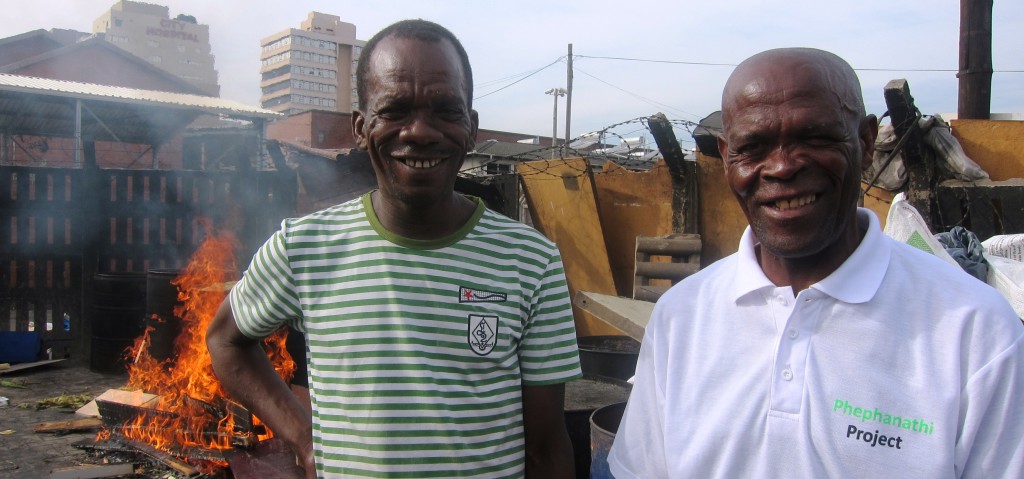
GPS points were taken by AeT/WIEGO staff as we moved through the market in order to create a digital map of the fire hazards. The Metro Fire Department officials also tested existing fire equipment, and gave some impromptu fire safety lessons about cooking with gas.

These lessons were really appreciated by the traders, who said that they were glad to have the information and would be interested in further training on fire safety from the Fire Department. The day ended with a reflection session, where it was agreed that the Fire Department would continue to collaborate with the traders in improving the safety of Warwick Junction.
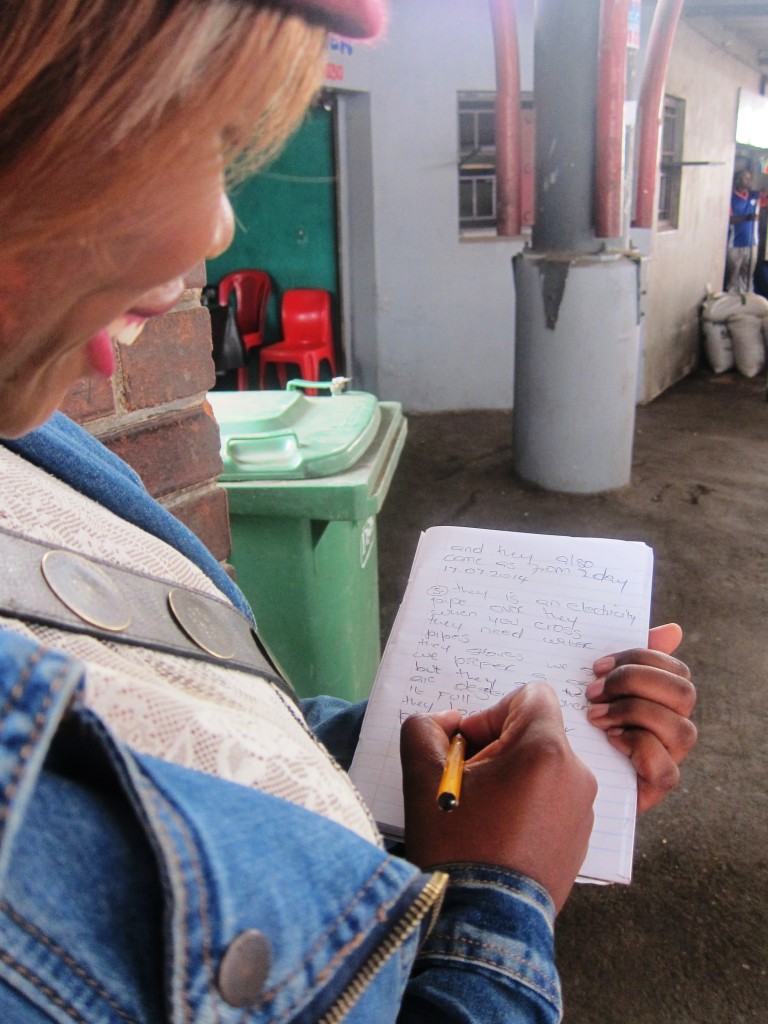
Next steps will include the design and piloting of appropriate firefighting equipment for the market context, and the development of a specific fire safety training course for traders. For more information about the Pephanathi Project, click here.
